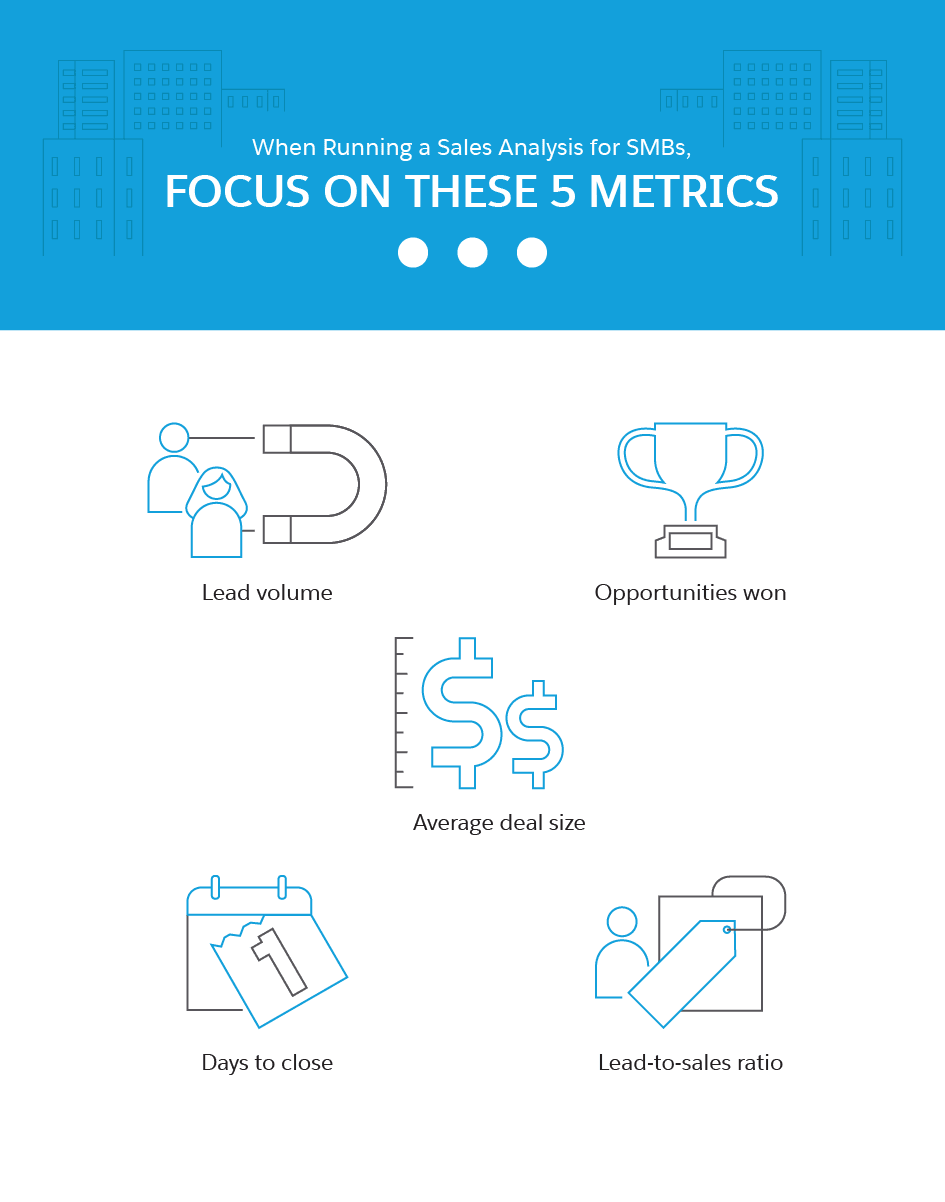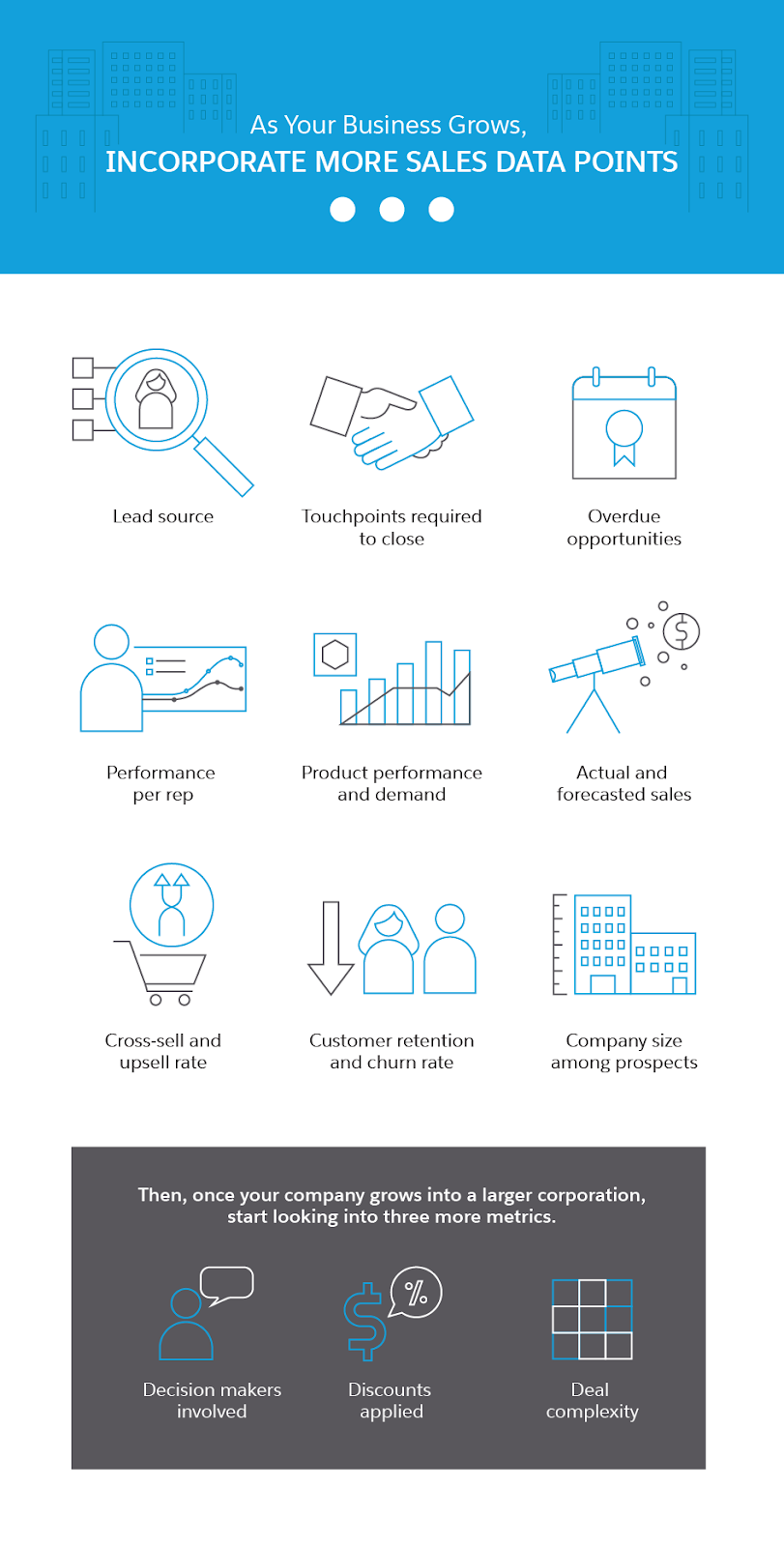When dealing with your small business sales at the early stages of starting your business, you might be happy just to be getting sales through, and you might only need a few simple graphs showing sales over time. However, as your business grows, the need for a more comprehensive sales analysis will probably too. Depending on your business’s size and maturity, you might be looking at different KPIs to determine your success.
There are different types of sales analysis styles based on the company stage, the leadership style of the SME owner, the type of product or service the company is selling, and the complexity of the sales process. For all types of businesses, sales analysis can be helpful in increasing revenue, either by taking notice of what is working and doubling down on that tactic, fixing leaks in the funnel, or identifying high-performing reps and replicating their tactics across the organisation. For many businesses, it can be easy to get lost in the realms of possibility, so there are some key metrics to focus on initially. Let’s get started!
The basic analysis

When you begin your first sales analysis for your SME, look at how many leads you are getting. Is this enough to meet your sales goals? A simple way of working is to take an estimate of how many leads become real opportunities, and what your sales reps’ rate of closing is. For example, if you are generating 100 leads (lead volume) a month, and 30 of them become real opportunities, your salesperson might close 10. That means your lead-to-sales ratio is 1 in 10. This is a useful metric for scaling your business as you will know, approximately, how many leads you need to feed your sales team to make your sales target.
Also, look at your average deal size; is it enough to meet your revenue goals? And how long does it take your team to close the deal? This is helpful because when you invest more in generating leads and marketing, there will be a lag before this shows in closed opportunities. It can also help a lot with managing your cash flow.
The next stage

So, your business has grown- that’s great news! This means your sales operations have increased as well, becoming more complex. With so many more moving parts, you may want to expand on the sales analysis you are doing to provide yourself and your teams with more information.
- Lead source: Where is the best source of new business for your company? Which of your marketing investments are working, and do some become opportunities more easily than others? This can help you to plan and to double down on what works.
- Touchpoints required to close: On average, how often does your sales and marketing team need to interact with a potential customer to close an opportunity? This can help you keep your opportunities on track by making sure your team has them booked in.
- Overdue opportunities: Based on your early-stage analysis, you know roughly how long an average opportunity takes to close. Which ones are taking longer than that? You can then focus your attention as a business owner on providing executive support.
- Performance per rep: Take the learning from your superstar sales employee and teach the rest of the team!
- Product performance and demand: It’s hard when you’re building a business to decide product-market fit. Find out which ones are resonating with potential customers the most.
- Actual and forecasted sales: Check your predictions were right, and what you can learn.
- Cross-sell and upsell rate: If a lot of your revenue is coming from existing customers, you might want to invest more in customer success.
- Retention and churn: It’s a lot more expensive to find new customers than to retain existing ones, and they can be a great source of leads and testimonies. Make sure you look after them, and if your churn rate is high, work out how to reduce it.
- Company size among prospects: Work out the demographic of a typical customer and prospect and use it to help with your sales targeting.
Go into sales analysis with an open mind
The more pre-determined ideas you have, the less likely you are to find nuggets of information about why some things are performing well and some are not. If possible, once you have garnered this analysis, spend time with the best-performing sales rep, at the marketing activities that are driving the most leads, and, of course, with your customers.
Take the approach that is right for your business
Different businesses have different customers, products, and number of deals in play. The more of a volume business you have, the more you will need to do quantitative analysis. This is where a CRM can help to notice patterns with AI and prompt decision making. If you have a small number of customers and deals, a more qualitative analysis can help. This is where it is great to have a single source of truth about every customer, to see the notes and the activities they have been involved in. Depending on where you are at, you might want to analyse your sales casually, diagnostically (to fix a problem), or predictively (to apply for funding).
Communicate the results with your sales team to act
A good sales analysis has four critical components:
- It is accurate and comprehensive
- It provides actionable and useful ideas
- It easily surfaces data that informs strong decision-making
- It saves leaders and managers time
An open, transparent culture drives employee engagement and helps them to understand what success looks like and how their results personally contribute to the bottom line drive performance. Get the hang of basic sales analysis and you can turn the data into actionable insights to improve your lead acquisition campaigns, nurturing and customer retention- ultimately growing your business.
A CRM can help you to analyse your sales data and visualise it in one place in real time. Learn more about our Small Business Solutions here.
























